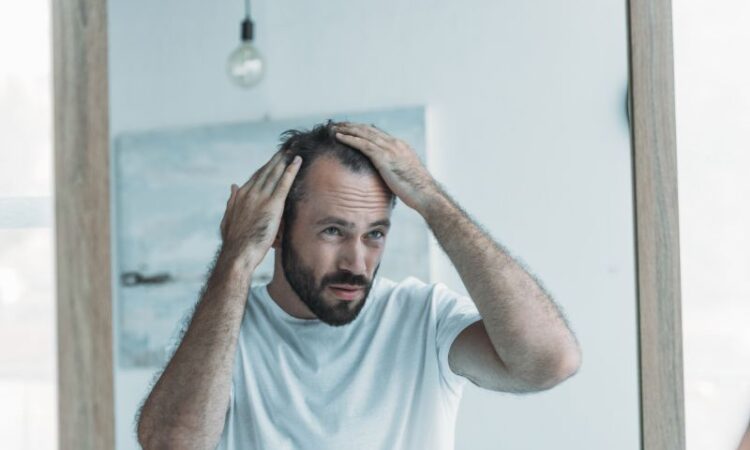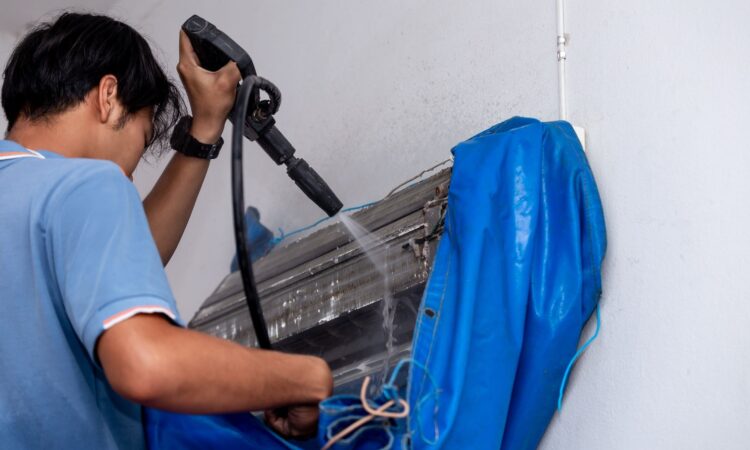
Navigating Cradle Cap: Causes, Prevention, and Gentle Remedies
Cradle cap, a common skin condition among infants, often raises questions and worries among new parents. In this comprehensive guide, we will delve into the intricacies of cradle cap, exploring causes, preventive measures, and gentle remedies to ensure your baby’s scalp remains healthy and comfortable throughout their early development.
Understanding Cradle Cap
Definition and Characteristics
Cradle cap, also known as infantile seborrhoeic dermatitis, is characterized by the appearance of greasy, yellowish scales on a baby’s head. Although this frequent ailment can be worrying for parents, it is often harmless and is part of a newborn’s natural skin transition. Understanding its distinguishing features is critical for successful management and peace of mind. The scales are caused by an overproduction of sebum, the skin’s natural oil, in reaction to maternal hormones.
The specific reason is unknown, however environmental variables and genetic predispositions may play a role. It is crucial to remember that cradle cap does not cause discomfort for the baby and usually resolves on its own. Gentle care measures, such as regular bathing with gentle baby shampoo and using natural oils for moisturizing, can help manage the issue without causing distress to the infant. Patience and reassurance are essential as parents negotiate this fleeting stage of their baby’s early growth.
Age Group Susceptibility
Cradle cap, a common condition in infants, usually appears within the first few weeks of life, drawing the attention of concerned parents. While it can last for several months, particularly in the early stages of infancy, it is important to remember that cradle cap is often a transitory and harmless ailment. The presence of greasy, yellowish scales on the baby’s scalp is caused by the sebaceous glands responding to maternal hormones.
Although the exact period varies by the infant, cradle cap frequently disappears spontaneously without causing long-term harm. This transitional period is a normal component of a baby’s growth as their body adjusts to external and internal stimuli. Parents are recommended to use gentle care routines, such as regular washing with mild baby shampoo, to effectively treat cradle cap and provide reassurance while their baby’s skin changes over time.
Identifying Symptoms and Distinguishing Conditions
Differentiating cradle cap from other skin disorders is critical for appropriate diagnosis and targeted treatment. While greasy, yellowish scales on the baby’s scalp are the distinguishing feature of cradle cap, it is critical to recognize its specific symptoms to avoid confusion with other dermatological issues. Unlike more serious illnesses, cradle cap causes no discomfort or irritation to the newborn.
The scales are usually not inflamed, and there is no redness or discomfort near the affected area. Understanding these basic traits allows parents to accurately diagnose cradle cap and differentiate it from illnesses such as eczema or psoriasis. If there is any doubt, it is best to seek confirmation from healthcare professionals. This information enables parents to implement particular and compassionate care tactics targeted to cradle cap, ensuring that their infant receives proper attention without excessive concern or the use of incorrect treatments.
Causes of Cradle Cap
Role of Sebaceous Glands
Active sebaceous glands in newborns play an important role in the development of cradle cap, regulating skin physiology during the early stages of life. These glands, located beneath the skin’s surface, produce sebum, a natural oil that protects and moisturizes the skin. Cradle cap is caused by excessive sebum production, which may be induced by maternal hormones in the baby’s system.
This excess sebum helps to develop the scalp’s characteristic greasy, yellowish scales. Understanding the science underlying these glands provides important information about their function in your baby’s skin health. While their hyperactivity leads to cradle cap, it is critical to recognize that these glands play an important role in maintaining general skin health by providing hydration and protection from external factors. As the baby grows, these glands progressively regulate their activity, and the cradle cap usually disappears on its own.
Influence of Maternal Hormones
Maternal hormones have a major impact on the development of cradle cap, indicating a unique interaction between a mother’s hormonal levels and her newborn’s skin health. During pregnancy, moms pass a variety of hormones to their offspring, including androgens, which can stimulate the baby’s sebaceous glands. This stimulation increases the production of sebum, the skin’s natural oil, which contributes to the development of cradle cap. Exploring this hormonal influence gives parents a better grasp of the natural processes that govern their infant’s skin development.
Parents must understand that cradle cap is a temporary condition caused by hormonal fluctuations and does not indicate any underlying health problems. Recognizing that cradle cap is only transitory allows parents to manage it with patience and confidence while supporting their infant during this developing stage.
Other Contributing Factors
Aside from hormonal and glandular variables, cradle cap can be caused by a variety of environmental and genetic factors, making it a complex disorder. Environmental variables, such as climate and exposure to specific irritants, may contribute to or exacerbate cradle cap. Furthermore, genetic predispositions within families may make some infants more likely to acquire this illness.
Exploring these elements provides a thorough picture of why cradle cap develops in some infants. It emphasizes the delicate interplay of hereditary vulnerabilities and environmental factors, shedding light on the complexities of this prevalent skin disorder. While these variables contribute to the formation of cradle cap, it’s important to recognize that good treatment measures, such as gentle hygiene and moisturization, can dramatically reduce symptoms and protect the baby’s delicate skin.
Prevention Strategies
Importance of Regular Baby Hygiene
Establishing a consistent hygiene routine for your infant is an important part of managing cradle cap. While the condition is usually harmless, maintaining cleanliness is critical for improving overall skin health. Regular cleaning practices are critical in preventing the worsening of cradle cap symptoms. However, it is critical to achieve a balance, as overwashing or using harsh cleansers may aggravate the problem.
It is best to use moderate, fragrance-free infant shampoos and cleansers because they clean well without irritating the skin. Gentle washing helps to eliminate excess oil and scales from the scalp, reducing the buildup that causes cradle cap. Incorporating a soft-bristle brush into the routine also helps to gently massage the baby’s scalp, which aids in scale removal. This comprehensive approach to hygiene not only eliminates cradle cap, but also promotes a good and caring environment for both the mom and the infant during this critical developing stage.
Choosing Suitable Baby Care Products
Not all infant care products are made equal, and it is critical to select those that are tailored to your kid’s specific needs. It is critical to use gentle and hypoallergenic shampoos and cleansers, as these products are designed to cleanse without irritating or upsetting a baby’s delicate skin balance. Fragrance-free choices significantly limit the possibility of allergies causing undesirable responses. In this detailed tutorial, we will explain how to read product labels, discover compounds that are good for sensitive scalps, and detect potential irritants. With this knowledge, parents can confidently select infant care products that nourish and preserve their baby’s delicate skin, reducing the risk of cradle cap development and establishing a positive skincare regimen from infancy.
Gently Massaging and Brushing Baby’s Scalp
Including gentle massage and brushing techniques in your baby’s hygiene routine can be a relaxing and effective way to treat cradle cap. These activities not only treat the physical symptoms of cradle cap, but they also provide a calming and bonding experience for both the parent and the infant.
Using your fingertips to massage the baby’s scalp in a circular motion loosens scales and stimulates natural oils, resulting in a healthier scalp. Furthermore, utilizing a soft-bristle brush created exclusively for infants aids in the delicate removal of scales while minimizing discomfort.
This tactile interaction not only helps to treat cradle cap, but also gives the baby a sense of security. Incorporating these approaches into routine caregiving moments fosters a positive link with skincare, making it a pleasant and calming experience for the infant and cementing the parent-child bond.
References
Cleveland Clinic: https://my.clevelandclinic.org/health/diseases/15786-cradle-cap-seborrheic-dermatitis-in-infants
This page from the Cleveland Clinic provides detailed information about cradle cap, including its causes, symptoms, and potential complications. It also discusses treatment options and when to see a doctor.
KidsHealth: https://kidshealth.org/en/parents/cradle-cap.html
KidsHealth offers a parent-friendly guide to cradle cap, explaining what it is, what causes it, and how to manage it. They also provide reassurance that the condition is common and harmless.
WebMD: https://www.webmd.com/skin-problems-and-treatments/treating-cradle-cap-in-children
WebMD provides a comprehensive overview of cradle cap, including its symptoms, causes, and treatment options. They also offer tips on how to prevent cradle cap and when to see a doctor.
The post Navigating Cradle Cap: Causes, Prevention, and Gentle Remedies appeared first on Totally Babies.
The Article Navigating Cradle Cap: Causes, Prevention, and Gentle Remedies was found on https://limitsofstrategy.com
The Article Navigating Cradle Cap: Causes, Prevention, and Gentle Remedies First Appeared ON
: https://ad4sc.com











